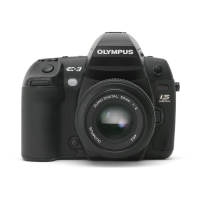38
EN
2
Shooting guides – Improving your shooting skills
Using exposure compensation
When shooting flowers against a background, select as simple
a background as possible to bring out the shape and color of
the flower. When shooting bright and whitish flowers, adjust
the exposure compensation to – (minus) so that the flower
stands out from the darker background.
Changing shooting mode
The proper shooting method when taking pictures of flowers differs
depending on whether you want to emphasize a single flower or capture
a field of flowers. To change the focus area, set the camera to
A
(aperture priority shooting) mode and select the aperture value.
•
When you open the aperture (decrease the aperture value), the camera
focuses within a shorter range (with a shallow depth of field), emphasizing
the subject against a blurred background.
•
When you close the aperture (increase the aperture value), the camera
focuses over a wider range (with more depth of field), producing a picture
with both the foreground and background in focus.
You can use the preview function to confirm the changes in the depth of
field when the aperture is changed.
Using live view
When using a conventional digital single-lens reflex camera with interchangeable lens system,
it was necessary to wait until after taking the picture to check the results of the exposure
compensation and white balance settings. With the live view function of this camera, however,
you can use the monitor to display and check the subject you want to capture.
Changing lenses
When the blooming flowers are few and sparse, take the picture using a telephoto lens. With a
telephoto lens, you take pictures in which subjects at different distances appear closer together,
giving the impression of a more densely blooming flower field. Using the telescopic feature of
the zoom lens also achieves the same effect, but it is easier to achieve this effect when the
focal distance of the lens is longer, such as 150 mm or 200 mm, rather than 54 mm.
g
“AF SENSITIVITY” (P. 96), “Aperture priority shooting” (P. 41), “Using live view” (P. 30),
“Preview function” (P. 45), “Exposure compensation” (P. 47), “Selecting the white
balance” (P. 67)

